Bootstrapping a $2.5 Million Per Year Fitness App with Zero Employees
"The beauty of being bootstrapped is I get to make these kinds of decisions as opposed to relentlessly pursuing growth at all costs, plus I’m relatively confident that we could get to $15-$20million in ARR in the next 2-3 years"
-1.png)
If you read our piece about Ania Wysocka, and how she bootstrapped her app to 2.5m users with zero employees, then you're going to love this one.
Hampton member Joseph Mambwe is the founder of GymStreak, an innovative fitness app that uses high-end animation and augmented reality to give users an in-depth understanding of the mechanics of each exercise, while also helping track and modify their regimen.
Last year, the app did $2.5m in revenue with no employees – just a small team of high-skilled freelancers helping with key aspects of marketing and customer support. Revenue was up almost 10x YoY, they average ~1.5x ROAS on day zero, recouping their CAC almost immediately, which is incredible.
Best of all, it's all bootstrapped. So he can grow as fast or as slow as he wants, and he takes full advantage of this, dialing the business up and down to match his life goals.
After slowing down to optimize a few key conversion points, he's pretty confident the company will hit $15-$20 million in the next few years.
Here's how...
Hello! Who are you and what business did you start?
My name is Joseph Mambwe and I created the GymStreak app, which automatically creates and manages home & gym workouts.
That means it not only creates the workouts, but it also intelligently adjusts your weight, reps, rest times and sets for you over time. It also allows you to track your nutrition all in one place.
One of the key differentiators of the app is that all the exercises are animated in 3D, and our app allows you to view any exercise from any angle as well as project any exercise into your environment using augmented reality. This is perfect for beginners who are unsure about the correct form of an exercise as it disambiguates the technique in a way that can be sometimes obscure in 2D images/videos.
GymStreak is completely bootstrapped and I have a team of 4 contractors that help with auxiliary functions like customer support, blog writing, creatives and performance marketing, but everything else I do myself.
Revenue wise in 2021 we did ~$300k in revenue, in 2022 we did ~$2.5 million and this year we are set to do about the same, maybe slightly less, with growth slowed down mostly by choice to allow me some time with my newborn baby daughter (!) and also to improve the product to get some of our product metrics up to par that such quick growth had revealed can be done better (Download-to-trial, trial-to-paid, and churn rates to be specific).
Beauty of being bootstrapped is I get to make these kinds of decisions as opposed to just relentlessly pursuing growth at all costs, plus I’m relatively confident that we could get to $15 - $20million in ARR in the next 2 - 3 years.
What's your backstory and how did you come up with the idea?

I was born in a rural town in Zambia (Chipata), moved to Botswana when I was 4, and moved to the UK when I was 12 years old.
My early years were defined by my family moving around a lot trying to find better opportunities and to improve our circumstances. My mum is a nurse and she got the opportunity to work in the UK and after a couple of years and paperwork, we joined her 2 years later.
I remember arriving in the UK, experiencing broadband internet for the first time and feeling like I jumped years into the future. That’s when I got obsessed with learning all sorts of random things on the internet over the years.
I was like a kid in a candy store, I learn things like how to pop and lock, how to replace iPod touch screens (which I had turned into a mini side business in high school), the lyrics to Westlife’s Unbreakable, how to do a bench press, and things even more random than this.
In the midst of random knowledge I acquired, I had learnt rudimentary 3D modeling and animation, making homemade animated videos with no real objective other than my own amusement. Little did I realize that this exposure to 3D authoring would be the key skill I needed to execute on GymStreak years later.

Doing all this made me realize that I was particularly good at learning things, especially when I discarded the way I was supposed to learn, and substituted my own methodology. When I was in high school I struggled to keep up in class when I was doing things the way I was supposed to. At some point I kind of gave up paying attention in class and started teaching myself the subjects in my own weird ways. Like turning everything into a rap, or using the “roman room” technique (which I also found on the internet) to retain information.
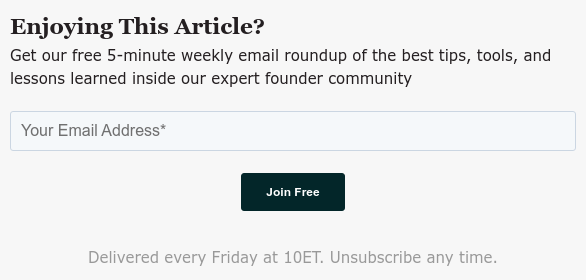
I went from scoring quite low in the mock exams to graduating top of my entire school at the end.
In the UK we have a period of two years between High School and University called A levels where I then started my obsession with fitness.
I was a very skinny dude and started to obsess over different training techniques to build muscle and together with my best friend at the time (Who is coincidentally also one of the contractors that now works with me on GymStreak), walked into a gym for the first time and unknowingly changed my life forever. Below is a picture of my initial transformation back then:
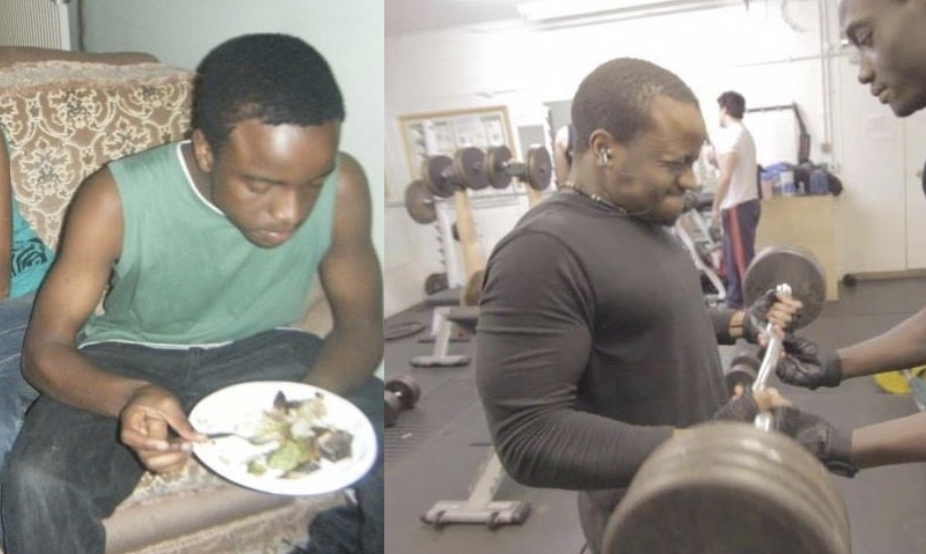
After A levels I then went on to study Engineering at the University of Cambridge where I first came up with the idea of GymStreak.
By that point I had also become really good at UI design (something else I learnt on the internet) and had developed what I think was a good taste for design and decided I didn’t like any fitness app that was on the AppStore at the time – I thought they all sucked in design and it was my sacred duty to save the fitness section from bad design!
But even bigger than that, over the years I started to believe deeply that one of the biggest factors that determine whether or not anyone will be successful in their fitness journey is just pure consistency.
Having perused all sorts of different training techniques and methodologies I concluded that it almost doesn’t matter what you do at the gym, there are like a 100 ways to skin the proverbial cat, what matters most is just the sheer will to keep going. “Be Unstoppable” is the mantra I started to live by and one I wanted to share through GymStreak. It’s in the name!

Only problem was that I didn’t know how to code at the time, so like I had always done, I concluded I was going to teach myself how to code.
My limited capabilities at the time didn’t allow me to fully realize what I had envisioned but it was enough to create a simple version of the app that lived on the appstore for years as a paid app among a portfolio of other apps I had created in my previous company.
It was only in 2018 that I decided to spin GymStreak out into a separate company and try to fulfill the initial vision I had all those years ago.
The simpler version of GymStreak was essentially just a catalog of exercises, with 2d images, where users could construct their own workouts but something that consistently came up was users asking exactly what they should do in the gym, and that’s when I knew I had to do it.
Take us through the process of building and launching the first version of your product.
The more interesting part of this story is when I spun GymStreak out into a fully fledged company because that required overcoming a lot of technological challenges.
First, I wanted all the exercises to be animated in 3D which meant implementing a 3D engine. This is because I had the conviction that augmented reality (now known as Spatial Computing) was the future. And I wanted to make sure that if and when that transition was to happen in earnest, that my product is built in a way that will be ready for that but also be able to provide value today.
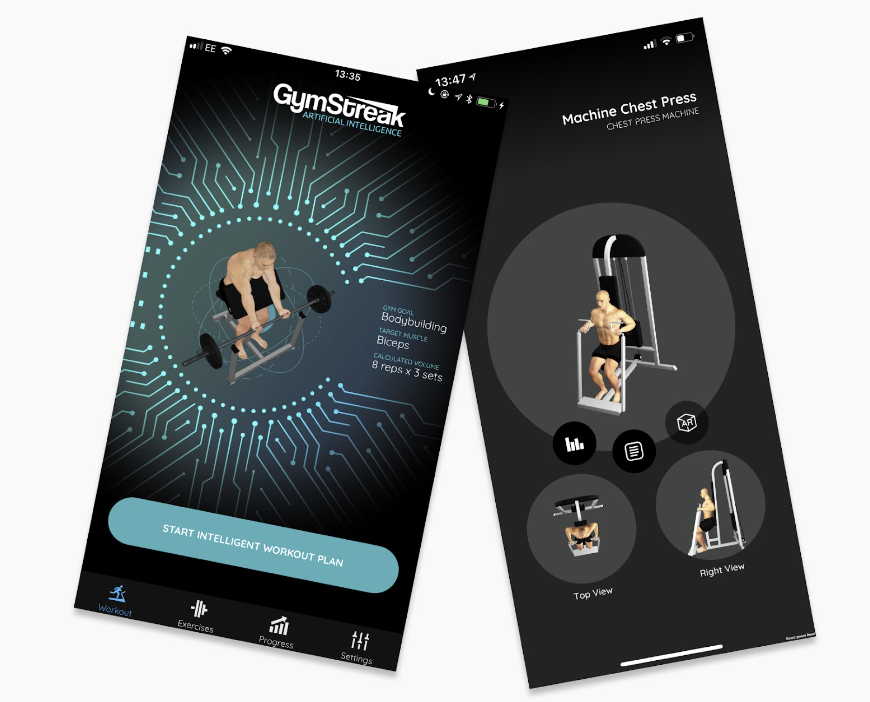
This however meant painstakingly animating each and every animation by hand. We later augmented this with motion capture, using the real motions of a personal trainer to animate our exercises.

This all meant we had to come up with a robust 3D asset pipeline, which is essentially our ability to animate and deploy 3D assets at scale, a key competency I believe is required in a world of spatial computing and one that we have developed some novel solutions for.
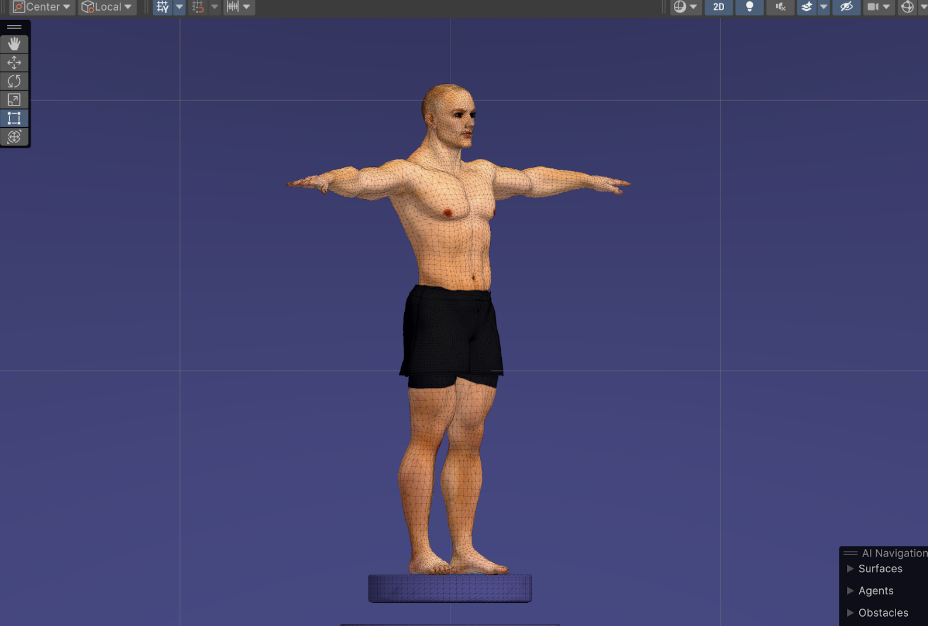
In terms of the design of the app, as the designer and developer, I could iterate in code, so I prototyped in code, and because I adopted a cross platform declarative programming language (flutter), it was faster to design in code for me than it was to design in UI authoring software.
I mainly used Sketch & Figma to storyboard rather than create full fledged designs.
Our launch itself wasn’t to any fanfare or hype, we initially soft launched in smaller english speaking geos, slowly turned on our ad spend until the app was stable and as crash free as possible, then launched to all geos and progressively increased ad spend when it was established to be profitable.
Since launch, what growth channels have been most effective for you?
To put it simply, our most effective growth channel has been facebook and tiktok ads.
Our unique app design and in app content allows for some creatives that convert users relatively well and one thing I like about paid ads is the level of control over the inflow of users. This is particularly useful to me as I like to work at my own pace and as a solo developer I can effectively control the ‘chaos’.
The key for us being able to grow so quickly with paid ads with no funding was being able to bring that payback period to day 0, meaning through a combination of high creative production, onboarding, offers and smart pricing we are able to return all ad spend on the day we spent it, and actually at present, we are turning about ~1.5x on ad spend on day 0.
So for example let’s say I spend $100 today, I will return ~$150 in new revenue without any renewals or trial conversions, we have dialed our spend down this year so that somewhat diminishes at much higher spend. But even at the highest spends we would typically breakeven on day 3/day7 (when our trials pay out). This means we get into profit much faster without having to go into the red.
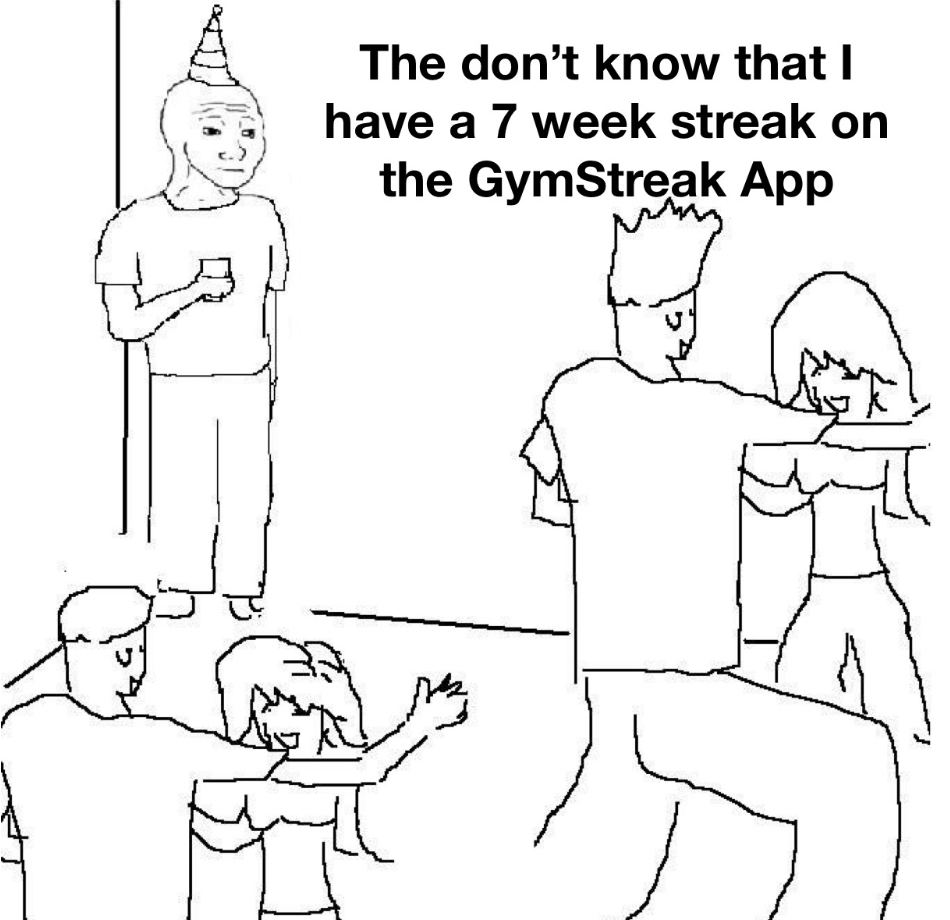
We also have a blog that has been a very slow burner but admittedly we have no idea what we are doing as it relates to SEO. ASO (AppStore Optimization) is another growth channel that we haven’t focused on but get some traffic from. (If you are a master at this stuff hit me up!)
Aside from that we’ve had a few one offs happen like: Tim Cook tweeting about me (although didn’t have as much of an effect as you would imagine)
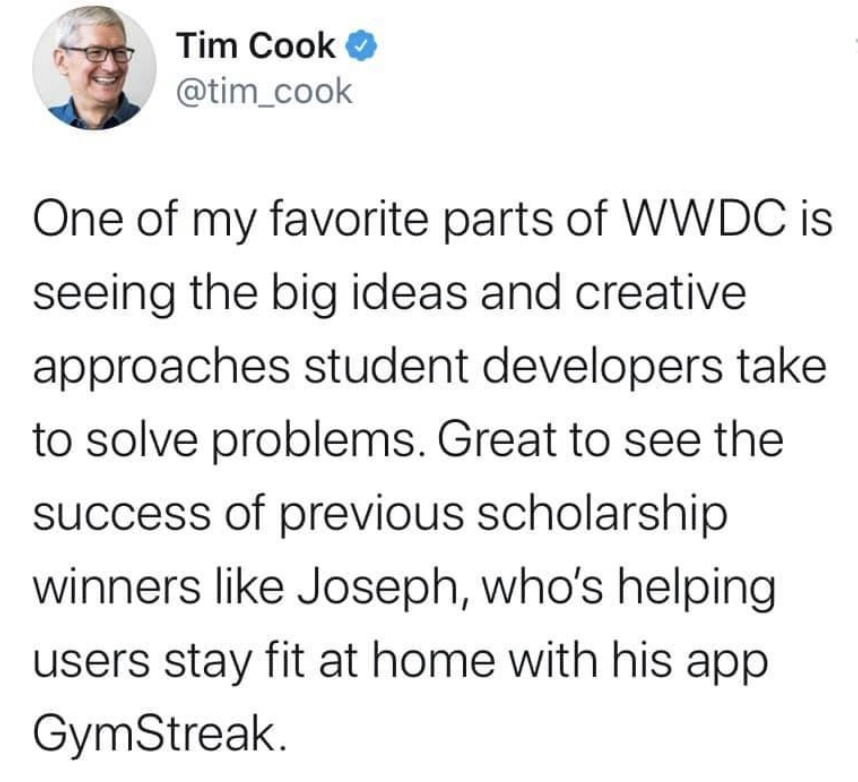
And more recently getting featured on the app store:
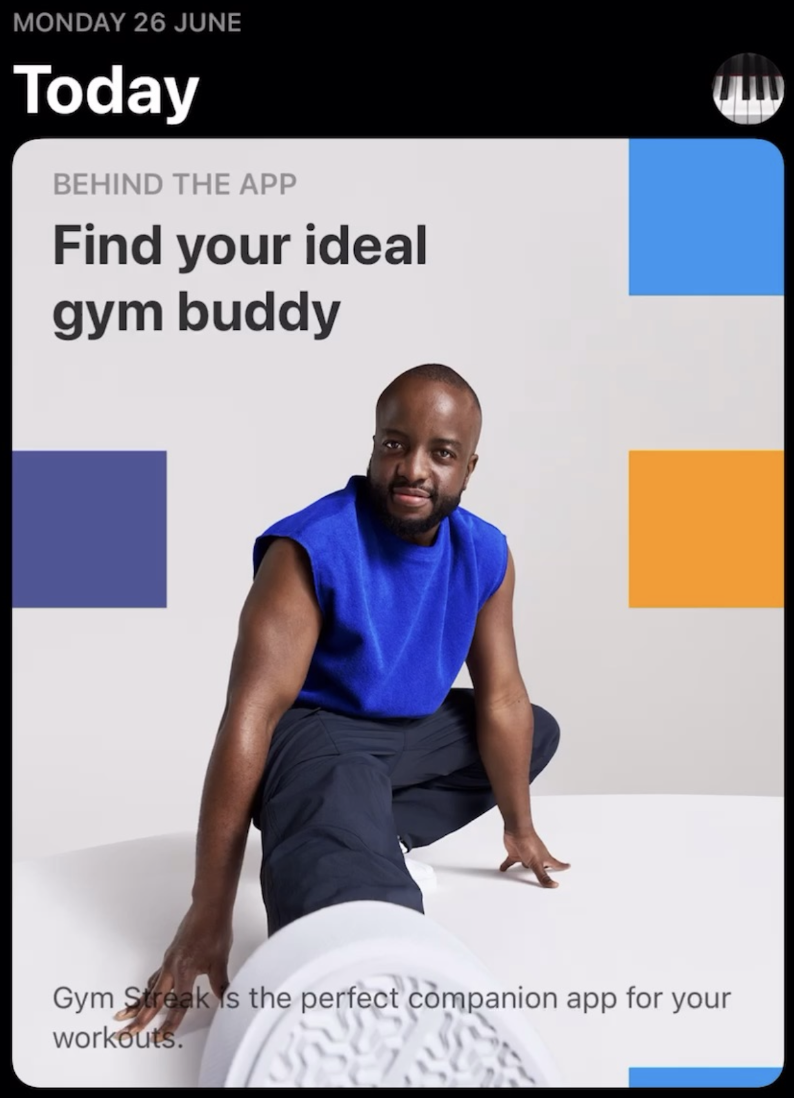
Did you ever have an “oh shit” moment where you thought it wouldn’t work?
One moment is when covid was spreading and all the gyms across the world were closing down.
We had centered our entire branding and ad creatives around the gym and saw a sharp decline. Within a matter of days I had coded and shipped a home workout option, with brand new exercises and changed all our creative to “gym quality home workouts” and basically made the effect far less impactful on our business than it could have been.

Then in 2021, growth completely plateaued at the $300k ARR mark, nothing we tried worked to shift this number. High churn rates were also catching up to us meaning that worse than a sudden demise we were slowly bleeding to death.
To combat this, I basically stopped everything, and spent 6 months studying other apps that were above us, charting all their flows and monetisation strategies, then rebuilding the entire product from scratch 3 times.
Launched the new product, all our metrics initially plummeted in the first few weeks, I thought “what have i done?” but I just evaluated all my changes and asked myself if they were fundamentally more valuable to the user, when that answer was yes I doubled down and ended up ~10xing our revenue the next year.
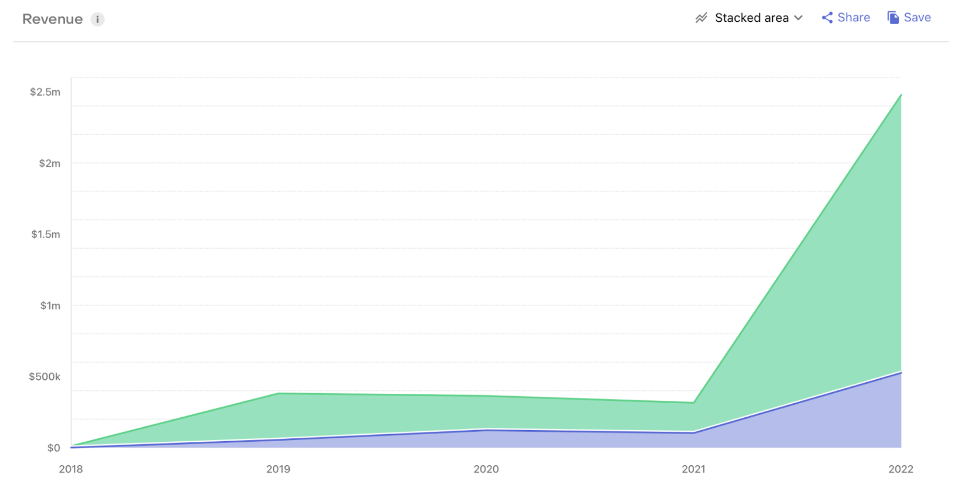
The thing that has always kept me going in moments like these is being anchored in the principle that GymStreak itself stands for, ‘Be Unstoppable’, and believing I had to do everything in my power to make sure it still exists in the world.
Can you break down the keys to this business model for us? What makes it work? And What do outsiders typically not understand about your industry?
As mentioned above, one of the keys to our business model is strength in our paid marketing and return on ad spend.
For a lot of consumer subscription apps, the payback period on ad spend is spread over multiple months/years, which means that the way a lot of apps like ours scale, especially the heavily funded ones, is that they rely on the long tail of renewals to cover the cost and eventually go into profit.
Being able to return ad spend immediately and be in profit is the strength of our business model.
Additionally, unlike a lot of b2b SaaS, the speed at which you can scale a consumer SaaS product can be significant. However, where the consumer business model (and us in particular) suffer is with retention.
This is something that took me embarrassingly long to really internalize that although we can profitably gain new users, the real money is going to be made in the compounding of the renewals. Which is why we’ve temporarily pulled back on our growth engine and completely focusing on maximizing retention.
What platform/tools are absolutely crucial for your business?
To facilitate our subscriptions we use RevenueCat. The key thing about RevenueCat that I don’t think enough subscription apps utilize is the ability to see cohorted realized LTV. So essentially being able to see the long term value of users acquired on a certain day, factoring in conversions and renewals, this is what gave us the confidence to spend and scale.
It’s the current talk of the town but as a solo developer ChatGPT and Github Copilot have dramatically increased my output. I had considered myself quite efficient as a developer before but what I’ve been able to do with these two tools is bananas.
For hiring contractors my favorite is UpWork. Makes finding, communicating, tracking and paying out contractors super easy.
What have been the most influential books, podcasts, or other resources?
Small Giants by Bo Burlingham - A somewhat contrarian book on business that celebrates privately held companies that chose to be great instead of big.
SubClub Podcast - This is a great podcast surrounding the topic of mobile subscription apps that digs into all the nerdy details I love about the mobile subscription economy.
Superwall Paywall Screens - This is a great resource for studying how other apps structure their paywalls/monetization
Where do you see untapped opportunity in the market? What business do you wish someone else would build that would make your job easier?
I would love it if someone could create a kind of affiliate system for mobile apps, that allows you to run campaigns with influencers/partners and profit share in the recurring revenue. Maybe allowing for the ability to set how long an influencer/partner will participate in recurring revenue for.
This I think would provide a unique proposition for outside parties to engage with subscription mobile apps in a way that can be quite lucrative for both as they would be incentivized to bring & keep users in the app.
It may exist but I haven’t found one yet.
What are some strong opinions you have about leadership, and how do you actually put those into practice in your company?
I believe in super autonomous working, which means I empower all my contractors to make unilateral decisions within their realm of responsibility.
Even when screening for my contractors, I would set a broad and somewhat obscure task and give as little instruction as possible, and just see what happens. If I get too many unnecessary questions from the contractor before taking action it’s not a good fit, but if the contractor uses their own initiative to figure out how to complete the task and makes their best guess as to what I was asking for, even if it isn’t exactly what I wanted, it’s a much better place to start from in my opinion for the way I work.
Because as a solo developer the last thing I want to do is micromanage on arbitrary tasks.
Practically, this also (controversially) means not answering questions immediately when they pop up on slack, to allow them to figure it out without me and just make a decision. And that is exactly what happens. I often will login to see a “how do i do ____ ?” followed up later by a “Nevermind, I figured it out, decided to do ______”.
Music to my ears!
Other than that I don’t particularly think of myself as a good manager, but the aspect of leadership I feel like I’m good at is motivating, storytelling, selling a dream, and making a team of contractors feel like a part of something that’s going to be big.
Where can we go to learn more?
Personally, I find being the CEO of a startup to be downright exhilarating. But, as I'm sure you well know, it can also be a bit lonely and stressful at times, too.
Because, let's be honest, if you're the kind of person with the guts to actually launch and run a startup, then you can bet everyone will always be asking you a thousand questions, expecting you to have all the right answers -- all the time.
And that's okay! Navigating this kind of pressure is the job.
But what about all the difficult questions that you have as you reach each new level of growth and success? For tax questions, you have an accountant. For legal, your attorney. And for tech. your dev team.
This is where Hampton comes in.
Hampton's a private and highly vetted network for high-growth founders and CEOs.



.png?width=352&name=Blog%20Featured%20Image%20(11).png)

